Workplace Safety Goes Prehistoric: Jurassic Park
In the classic film Jurassic Park, a seemingly well-designed facility spirals into chaos when multiple safety systems fail simultaneously. While most workplaces don’t contain prehistoric predators, the fundamental safety principles remain surprisingly relevant. Every facility, from small offices to sprawling warehouses, contains its own set of hazards that require thoughtful risk assessment and mitigation strategies with workplace safety.
Risk assessment forms the DNA of a well-run facility, pun intended, determining everything from daily operations to emergency responses. The fictional park’s downfall began with inadequate risk evaluation – they planned for predictable problems but failed to account for cascading failures or human factors. Similarly, workplace accidents often stem not from unknown hazards but from familiar risks that weren’t properly evaluated or addressed. Regular safety audits should identify not just individual hazards but also how systems might interact during emergencies. Even small oversights can cascade into major incidents when multiple factors align, just as a tropical storm, computer sabotage, and power failure created the perfect conditions for disaster in the film.
Emergency Workplace Safety Protocols
Having clear emergency protocols isn’t just good practice – it’s essential. Preparing for emergencies is like building a park with multiple layers of containment – each backup system provides another chance to prevent disaster.
- Keep evacuation routes clear at all times.
- Ensure communication systems work during power outages by installing backup generators and having alternative communication methods readily available throughout the facility.
- Train employees to recognize warning signs of system failures before they escalate into emergencies.
- Regularly test alarms and safety equipment to confirm functionality.
The most sophisticated safety systems mean nothing if people don’t understand how to use them. In the film, even with automated security systems, human error and communication breakdowns amplified the disaster.
Practice Makes Permanent
Training shouldn’t be a one-time event that employees quickly forget. Regular drills transform theoretical knowledge into instinctive action, especially during high-stress situations when clear thinking becomes difficult. When emergencies occur, people don’t rise to the occasion – they fall to their level of preparation.
